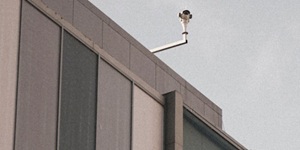
Blackburn: Must-read decision
A costs judge has allowed a leading US law firm to recover partner costs at £700 per hour, said to be the largest ever departure from the guideline hourly rates (GHR).
Costs Judge Leonard said the GHR were “necessarily of limited assistance” in heavyweight commercial litigation like this.
His decision from last August, but only just published, is the latest step in long-running litigation around enforcement of a 2013 arbitration award against Romania by the International Centre for Settlement of Investment Disputes, a case that has also involved the European Commission.
The matter reached the UK Supreme Court in 2020, where it went in favour of the claimants, but this hearing at the Senior Courts Costs Office (SCCO) concerned work done between October 2014 and February 2017 for a High Court hearing.
The decision does not specify the amount or rates sought by the claimant’s solicitors, Shearman & Sterling, but in assessing the so-called seven pillars of wisdom in CPR 44.4(3) – the factors the court should consider when deciding on costs – Judge Leonard said value of the dispute (£182m) and its importance to the parties were both significant.
He also rejected the suggestion that the real complexity lay in purely legal issues to be addressed by counsel.
The distinction drawn between counsel and solicitors in large-scale complex litigation “is one I have never been able to accept”, he explained.
“The solicitors bore just as much responsibility as counsel for the outcome of the litigation, and they had the same duty to understand and address the issues, both factual and legal.”
The case was “at the top end of the scale, even for City of London commercial litigation”, Judge Leonard concluded.
At the time of the work done, “it was becoming quite obvious that over time [the GHR] were of less and less value as a starting point in any context, much less on a detailed assessment”.
The paying party offered rates at 10% above the 2010 rates (which started at £409 for grade A in London 1), said to represent roughly a mid-point between the 2010 and 2021 rates.
Judge Leonard said the CPR 44.3 factors showed that “something substantially in excess of those notional guideline hourly rates would be justified”.
He went on: “The guideline rates are useful in this way: they illustrate the evolution of the rates between 2010 and 2021, and they offer some context for the decisions I have to make.”
Judge Leonard allowed grade A rates “at a maximum” of £700 per hour, £500 for grade B, £380 for grade C and £200 for grade D.
“At grade D, there is less responsibility and less expertise, but one must look at the grade D rate in the context of this very substantial litigation. Even the grade D fee-earners had a certain burden to bear.”
He also allowed the grade D rate of £200 per hour for bill preparation offered by Crofts, the law firm handling the costs issues for the claimants. This took into account “some problems in the preparation of the bill” and the £275 he previously allowed for the Supreme Court costs.
Crofts director Tom Blackburn said it was, to his knowledge, “the largest uplift on the guideline rates ever awarded by the SCCO”. The judgment, he said, was “a must-read for all litigators”.
















Is this just PR for Tom Blackburn? Why is there a massive picture of his face on the article?